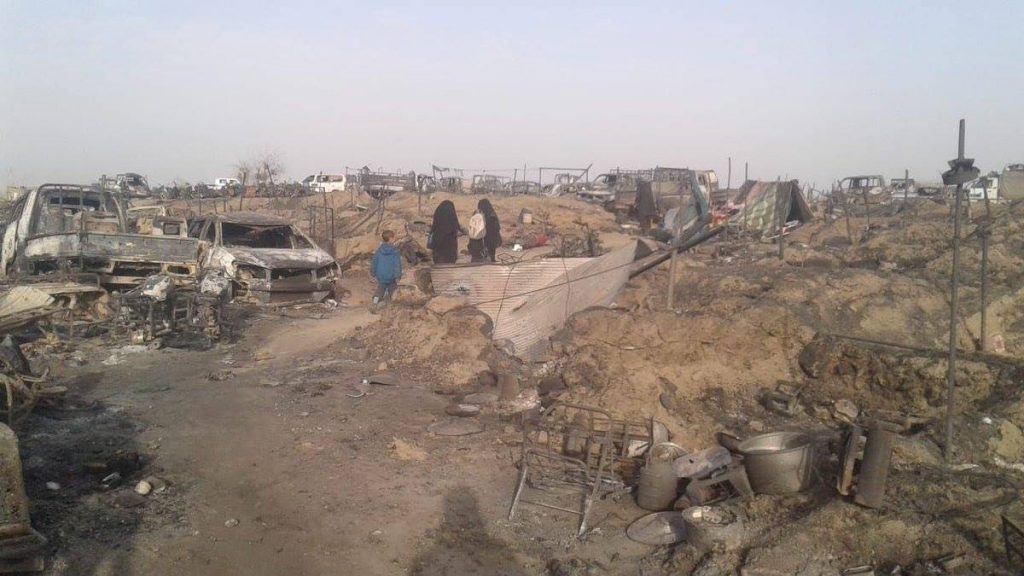
The US-led International Coalition has quietly admitted to killing 18 more civilians in Iraq and Syria and injuring a further 11, its first such public concession in eight months.
On March 10th, Operation Inherent Resolve (OIR) – the US-led coalition against the so-called Islamic State – quietly released on its website its first public civilian harm assessment since July 2021. It assessed a total of 63 incidents dating back to 2015, of which 10 were assessed to be ‘credible’ – meaning the Coalition accepted causing civilian harm.
The statement conceded that 18 civilians were killed and 11 were injured cumulatively in these ten events. Matching the incidents to its own archive, Airwars put the likely casualty numbers far higher for these events, with between 45 and 166 civilians reportedly killed. The remaining 53 incidents were deemed ‘non-credible.’
Unlike previous Coalition announcements on civilian harm, there was no accompanying public press statement or social media commentary. In a phone call to Airwars, CENTCOM confirmed it had published the information without any public announcement.
The release came after US Defense Secretary Lloyd Austin had ordered a comprehensive review into US military civilian harm processes following intense media scrutiny. As the Coalition itself noted in its opening paragraph, “this report is released as part of the commitment by the U.S. government to increased transparency and accountability.”
In total since the beginning of the war against ISIS in 2014, OIR has assessed 3,034 incidents of reported civilian harm from its air and artillery strikes. The alliance has only conceded 360 of these events to be credible allegations of civilian harm, according to Airwars analysis.
While the Coalition now concedes killing, overall, at least 1,437 civilians in its long war against the Islamic State, Airwars believes the likely tally is in fact at least 8,192 to 13,243 civilians killed.
Decline in releases
Civilian harm assessments released by the US-led Coalition were published monthly for a number of years, although they have significantly dropped in frequency since 2020. Last year, only seven such reports were released – four of them in the month of July. This was the first report since then.
Of the 10 incidents designated credible by the Coalition in its new report, seven were referrals from Airwars’ own archive. We were able to match an eighth event which was referred via both Amnesty and Airwars, to an incident within Airwars’ own database.
In only two of the eight events in the Airwars database admitted by CENTCOM did its own civilian casualty estimates match the public record. In the other six, US military concessions were far lower than the figures local communities had reported.
One of the ten ‘credible’ civilian harm incidents occurred on June 9th 2017 in Raqqa, during the most intense period of fighting for that city. Eight members of the al-Nasser family, including four children, were killed by a Coalition airstrike when their family home was hit. Najma Fadawi al-Nasser, whose 60 year old brother Faddawi was killed in the attack, had briefly left her cousin’s home when the strike happened. As she later told Amnesty “we were together and then I went to my cousins’ house across the road and my brother’s house was bombed and they were all killed. Why did they kill innocent people?” The incident was initially assessed by the Coalition as non credible. Now, four years later, the Coalition has conceded that eight civilians “were unintentionally killed due to their proximity to the strike.”
A further 53 incidents in the new report were assessed or reassessed by the Coalition to be ‘non-credible.’ A range of reasons are usually given for such categorisation, including ‘no strikes were conducted in the geographical area’; or that the ‘original allegations did not have sufficient information on the time and location of the incident’. However, these 53 incidents were all – highly unusually – designated as ‘non-credible’ for the same reason: that “after review of all available evidence it was determined that more likely than not civilian casualties did not occur as a result of a Coalition strike”.
Along with basic information about each incident, the Coalition’s own assessments also included an MGRS code, a military variation of latitude and longitude coordinates, which makes it possible to geolocate where each incident is alleged to have happened. Airwars found that at least one of the ‘non credible’ incidents had a location code in Turkey, indicating an error.
New York Times investigation
One of the ‘credible’ incidents in the new report, in Baghouz, Syria in March 2019, had previously been rejected twice by the Coalition as ‘non-credible’. A blockbuster New York Times investigation into the event recently led the Department of Defense to open an investigation into the incident – despite CENTCOM still classifying it as ‘non-credible’. While Airwars estimates that between 20 and 100 civilians were likely killed as a result of this strike, CENTCOM itself now says, “Regrettably, four civilians were unintentionally killed due to their proximity to the strike.” The release does not detail how this number was reached, or why it has only conceded four.
In January 2022, US Defense Secretary Lloyd Austin ordered a 90-day review into the Baghouz event and associated processes, which is due to publish by the end of April. Given that ongoing investigation by a four star US general – which Airwars has assisted – it remains possible that CENTCOM may yet release a fourth assessment of the event.
Speaking about the latest Coalition civilian harm release, incoming Airwars Director Emily Tripp noted: “While we welcome the release of these civilian harm assessments, it is clear that there still needs to be radical improvement in DoD processes.”
“We are seeking clarity in particular on when the remaining 37 open cases will be reviewed, as well as further information from DoD on their civilian harm assessment standards.”